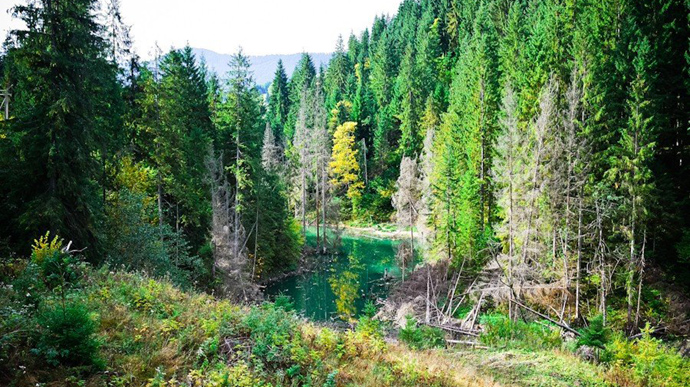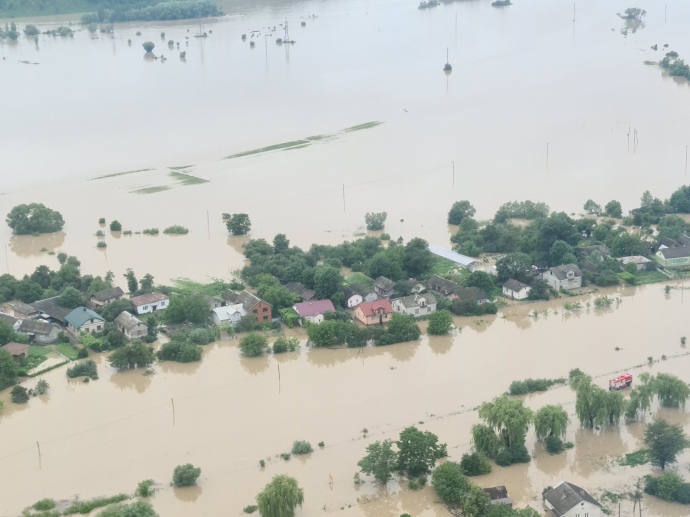After an abnormally dry winter and spring, that destroyed planted fields in southern Ukraine and caused dust storms throughout the country, abnormally heavy rains caused flooding in the Carpathians and on the plains along river beds.




Why these disastrous floods?
According to ecologist Petro Tiestov, the main cause of such a disastrous flood is not deforestation, as people usually thing (although it has an impact), but the destruction, melioration, and construction on the natural river floodplains. Such floodplains were destroyed in the Soviet era due to the barbarous policy of melioration to “have more arable land.” Streambeds were deepened, aligned, and strengthened by dams. Such artificial measures make river streams faster and more dangerous. Also, as experience proofs, dams can’t help since water finds its way out anyway. Therefore, the only solution is to concede to nature and preserve floodplains. Floodings will happen anyway at the time of heavy rains and the main question is what areas will be flooded and what human activity should be allowed in such areas. The other issue is to return rivers to their natural state. In particular, make streambeds curve, wide, with islands, as they naturally were until humans decided to have more land and leave less for rivers. Such restoration of rivers has already become an effective policy in other countries, in particular, in Switzerland.
He stresses that western Ukraine suffers from an absence of strategic planning. The development of the Carpathian regions takes place along roads constructed in the first half of the XX century, all of them along the rivers that are devastated by abnormal floods every decade or so. Richer countries have changed this practice 150 years ago, says Hlibovytskyi: building roads on the ridges or by traversing costs more but requires fewer maintenance expenditures than roads along rivers or with many bridges, which is why most mountain roads in the Alps or the Sudetes no longer follow mountain rivers.
Only if the risks of building roads in disaster-prone areas are monetized through insurances with a span of 20-25 years will local communities start thinking of investing prudently, Hlibovytskyi stresses. Until then, Ukraine will be forced to dole out emergency funds to restore destroyed infrastructure each time a catastrophe strikes - with the latest devastating floods happening in 1998 and 2008 - and the frequency of those catastrophes are prone to increase as a result of climate change.
Read also:
- On the verge of disaster: top 5 environmental problems in Ukraine
- Kyiv has a smog problem, and the authorities are ignoring it
- What caused the environmental disaster in occupied Crimea? A chemist explains
- Edible packaging and paper from leaves: six green startups from Ukraine





